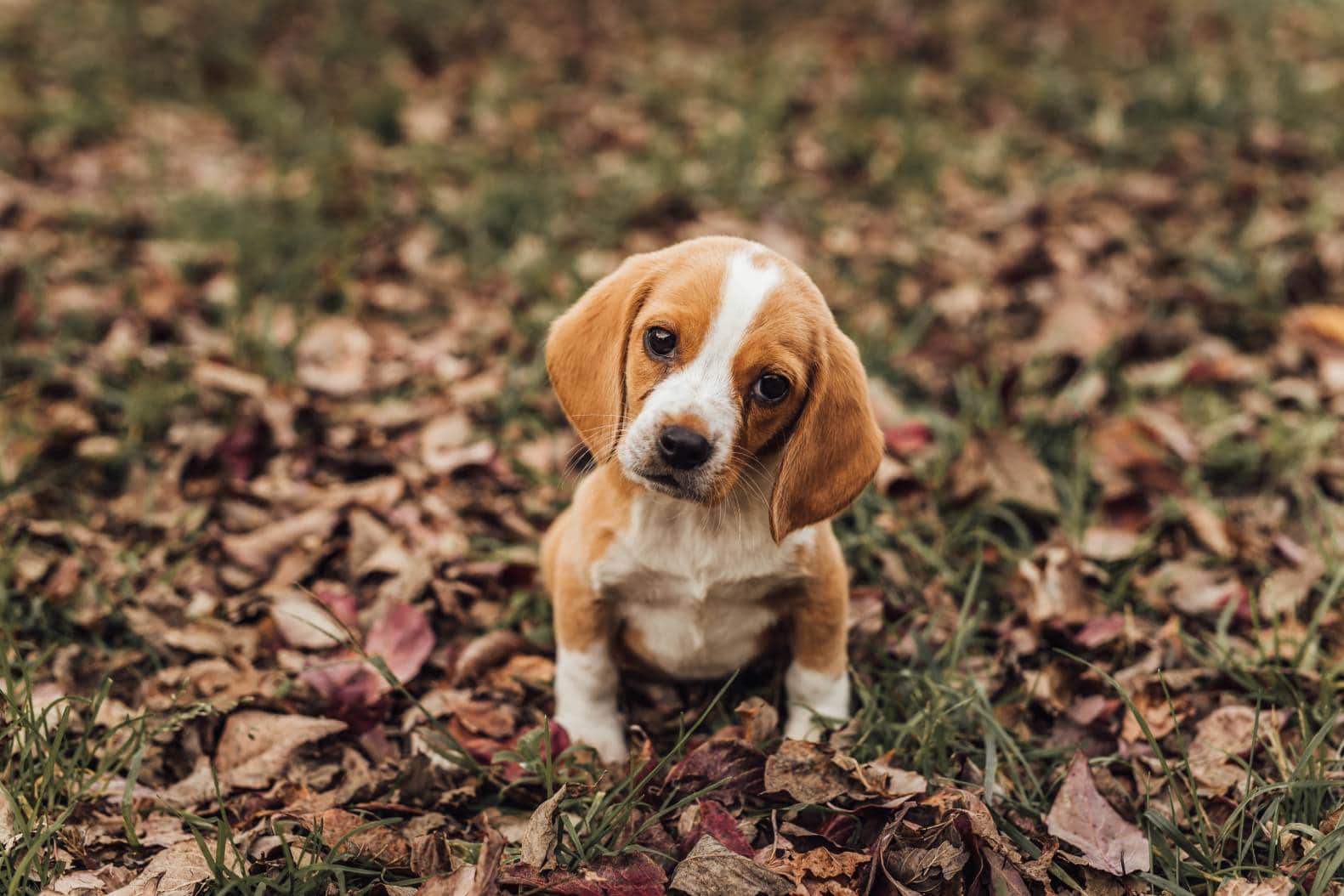Click to Skip Ahead
Lemon Beagles are purebred Beagles that are known for their white and golden-colored coat. They are rare to own and are considered to be a unique color variation. Lemon Beagles share all the typical traits that you would find in a Beagle, except they have a distinctive tan-yellow coat that is very light.
Breed Overview
Height:
13 – 15 inches
Weight:
18 – 30 pounds
Lifespan:
10 – 15 years
Colors:
Black, white, tan, red, tri-color; “any hound color”
Suitable for:
Families with children and other pets
Temperament:
Gentle, loving, lazy
The Lemon Beagle is loyal, and playful, and makes a great canine companion for dog owners if you are lucky enough to come across this rare Beagle coat color variation.
Beagle Characteristics
 The Earliest Records of Lemon Beagles in History
The Earliest Records of Lemon Beagles in History
Beagle-like scent dogs were first documented in 400 B.C. back in ancient Greece and in 200 A.D. in the United Kingdom where they were used as hunting and scent-tracking dogs. Beagles looked slightly different than they did today after modern breeders altered the Lemon Beagle due to breeding.
It is believed that Romans brought a group of hunting hounds into the United Kingdom where they were referred to as Beagles during the 1400s. During this era, the Beagle was starting to look more like the traditional Beagle, with a slightly smaller body. The early records of Beagles show a much smaller stature and simple coloring, and the Lemon Beagle is a relatively new color variation from modern-day breeders.

How Lemon Beagles Gained Popularity
Beagles were first used as hunting dogs that would track scents for their keepers. Their small size made them popular for catching small creatures such as rabbits because they could fit into the hiding places other large hounds struggled to. This is where the Beagles developed their strong smell as they used their nose to track the scent of small game for miles during a hunt.
During the 16th century in England, Lemon Beagles were bred to be rabbit-hunting hounds because they were so small and had an excellent sense of smell. This was the time when Beagles started to be kept as pets and were owned by wealthy Englishmen.
Now, the Lemon Beagle is a beloved dog around the world and is kept primarily as a companion dog. Their appearance of floppy ears, small head, short legs, and an elongated body with a good-natured temperament has made them popular amongst dog lovers.
Formal Recognition of Lemon Beagles
The Lemon Beagle is not a separate dog breed, but rather a color variation of Beagles. Their lemon and white coat is recognized by the American Kennel Club as it meets the standard AKC colors.
There was no need for the Lemon Beagle name to be registered by the AKC, only their coat color had to be accepted. Beagles were first recognized by the AKC in 1885 along with 14 other dog breeds, and they have recognized six different acceptable markings for this dog breeds coat, which includes the tan-lemon and white color of the Lemon Beagle.

Top 4 Unique Facts About Lemon Beagles
1. Born Entirely White
Most Lemon Beagles are born completely white, which has brought on the misconception that they are albino Beagles. Not all Lemon beagles are guaranteed to be born white, with some having faint patches of the lemon color they will develop as they mature. Over time, the Lemon Beagles puppy’s tan-colored patches will start to develop as their coat pigmentation begins to darken.
2. Lemon Beagles Are Rare
Compared to other Beagle color variations, the lemon and white coloring is rare. This makes them very difficult to find and rather expensive to purchase from a breeder. Out of all the Beagle dog breeds’ color variations, their lemon fur is the rarest to come across.
3. Not Yellow
Although this Beagle coloration is described as lemon, the Lemon Beagle is not yellow. They instead have a white body with very light patches that have a tan appearance. They look similar to the standard brown patches of the Beagle breed, except the color is very faint and has a golden tint.
4. Lemon Beagles Are Not a Dog Breed On Their Own
The name “Lemon Beagle” is used to describe a fur color variation in the Beagle dog breed. The Lemon Beagle still has the same traits, body structure, and temperament as a typical Beagle except with a different fur color.

Do Lemon Beagles Make Good Pets?
If you are a Beagle lover, you may find an interest in the golden-tan colored coat variation of the Lemon Beagle. Beagles in general make excellent pets for families and they are known to be intelligent and more tolerant of children than other dog breeds. However, the Lemon Beagle is not a good match for a household that has small pets like rabbits, guinea pigs, and hamsters as they have carried their hunting skills for small game for centuries.
Lemon Beagles do get along very well with other pets, and they are known for becoming devoted family members to their pet parents. Lemon Beagle care is the same as any other Beagle and feeding them a balanced diet, ensuring they are getting enough exercise, and attention from their owners is important in keeping them healthy.
They do not have long fur which means that their grooming requirements are not difficult, however, they are known to shed quite a bit. The Lemon Beagle can be quite vocal at times as they are known to howl more than other dog breeds, but with enough attention and training, you can help prevent your Lemon Beagle from becoming a constant howler.
 Conclusion
Conclusion
The Lemon Beagle is a fascinating coat color variation of the Beagle dog breed, and the color is only newly developed. However, the Beagle’s history can be traced back hundreds of years ago to when they were kept as hunting and scent-tracking dogs. The Beagle has developed over time to produce a variety of different coat colors with the rarest variation being the Lemon Beagle.
Featured Image Credit: Gabriel_JH, Shutterstock



 The Earliest Records of Lemon Beagles in History
The Earliest Records of Lemon Beagles in History



